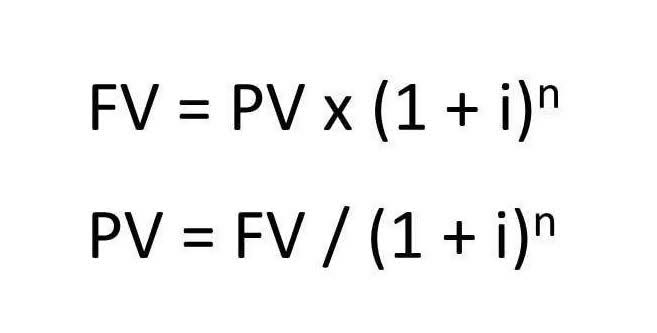Understanding Open Accounts in Finance: Insights and Implications
Хто такий Frontend Developer в IT: роль, обовязки, перспективи
July 4, 2024Internet casino Chan Hardly any Transfer Voucher codes >some Complimentary Spins
August 20, 2024
Contact the team at Big Red Cloud to find out more about how we can help ensure you’re using your opening and closing balance to get the answers and the insights you need. C/D stands for “carried down”, Bookkeeping for Painters which refers to an amount to be carried down from one accounting period and on to the next. This is also known as the closing balance, which is then carried down to become the opening balance of the next accounting period. Balance B/D means “brought down”, and refers to the amount that has been carried forward from a previous accounting period, which is also known as the opening balance. An alternative to B/D is B/F, which is an abbreviation of “brought forward”. Accounting software (such as our very own Pandle!) automatically generates opening and closing balances in your reporting, so you don’t have to think about them.

Simplify payments and money management
- This concept ties into open account transactions, offering more control over financial interactions.
- Meticulously keeping track of all expenditure and income is the key to ensuring your business’s assets, liabilities and equity are “balanced” at the end of the accounting period.
- But if you’re managing your accounts manually, you’ll need to work out the opening balance yourself.
- The closing balance for an accounting period is the sum of the differences between all of the credits and debits experienced by a business over that period.
- I’ll explain what the Open Balance column does in the Sales by Product/Service Detail Report.
When an accounting year what is opening balance equity ends, the business has a closing balance, which it carries forward to the new financial year. This amount is now the first entry in the books of accounts and acts as the opening balance for the new financial year. The opening balance on a credit card is the amount you owed at the start of your statement period. It is equal to the closing balance on your previous statement after any debits and credits have been taken into account.
The Role of Opening Balances in Financial Analysis

The opening balance is the first entry in the company’s accounts when it first begins trading and at the start of each new accounting period. Your closing balance is the positive or negative amount remaining in an account at the end of an accounting period. Once all of the transactions you need to record for that period, whether cash or credit, are entered into your accounts, you are left with your closing balance. Knowing what the opening and closing balances of your business are will help to establish exactly how well things are going.
- If you need any help, our support team is always ready to answer your questions.
- Nillion’s privacy technology transforms crypto banking, ensuring secure computation on encrypted data while addressing regulatory compliance challenges.
- The funds in a firm’s accounts at the start of a new financial period are called the opening balances.
- It is equal to the closing balance on your previous statement after any debits and credits have been taken into account.
- By using your opening and closing balance with Big Red Cloud, you’ll get those insights in an easy to understand way.
Take your first step into the Global transactions world with OneSafe!
- Generally, a new business assumes its opening balance to be zero since there’s no preceding accounting period to transfer any balance.
- This report shows you how much each customer owes you, and the corresponding individual invoices.
- When you start a new business your opening balances are zero, unless you spent money before setting it up.
- This balance is carried forward to the new financial year accounts and becomes the opening balance – the first entry in the new accounting period.
- Whatever the number is at the end of the month after all your sales have been recorded and all your payments have been made, that is your closing balance.
- However, if expenditures were incurred during the establishment process, these expenses would be carried forward and considered in the opening balance of the new financial year accounts.
Understanding how to calculate the opening balance is essential for maintaining accurate financial records and making informed business decisions. The opening balance serves as the foundation upon which a company’s financial activities for the accounting period are built. With Mollie as your payment service provider, you get real-time access to your company’s invoices and payouts, along with a detailed overview of your current balance.

When you start a new period, make sure to carry closing balances forward to become opening balances. Without an accurate opening balance, even the best accounting software in the world will be limited in what insights it unearned revenue can show you. Without monitoring your opening balance, you’ll have little understanding of your running totals from financial period to financial period. In accounting, it’s vital to understand various terminologies to manage opening and closing balances effectively. Terms such as B/D (brought down) and C/D (carried down) are particularly important, as they represent the opening and closing balances, respectively.

Whether you’re just starting your business or you’re an experienced entrepreneur, understanding the concept of opening balance is crucial for managing your company’s finances. Knowing how opening balances work can help you make informed decisions, maintain accurate financial records, and ensure compliance with tax authorities. Accounting adjustments are essential for ensuring the accuracy of the opening balance and, ultimately, the company’s financial statements. These adjustments, typically made at the end of an accounting period, include revising revenue and expense accounts, as well as balance sheet accounts. Integrating these adjustments allows businesses to convert cash transactions into the accrual accounting method, ensuring accurate recording of expenses and revenue. This practice lays a robust foundation for evaluating performance, maintaining compliance, and preparing reports.
Main Purposes of Financial Statements (Explained)
When in doubt, please consult your lawyer tax, or compliance professional for counsel. Sage makes no representations or warranties of any kind, express or implied, about the completeness or accuracy of this article and related content. Equity represents the residual interest in the business after deducting liabilities from assets. SumUp is a one-stop-shop for all of your business needs – from easy, compliant invoicing to accepting payments. A very simple example can illustrate how the opening balance of a company is calculated.
